Abstract
Transition-state choice behavior of pigeons was examined in two experiments designed to test predictions of melioration and the kinetic model. Both experiments began with an initial training condition during which subjects were maintained on concurrent variable-interval schedules. In Experiment 1, subjects were then exposed to concurrent variable-ratio schedules, whereas in Experiment 2, subjects were then exposed to concurrent extinction. Contrary to the predictions of melioration, but consistent with the kinetic model, acquisition of preference on concurrent variable-ratio schedules followed a negatively accelerated logistic trajectory, and preference remained stable in concurrent extinction. Predictions made by the kinetic model concerning rates of switching between alternatives were also supported.
Keywords: kinetic model, melioration, matching law, choice, transition-state behavior, concurrent schedules, key peck, pigeons
Full text
PDF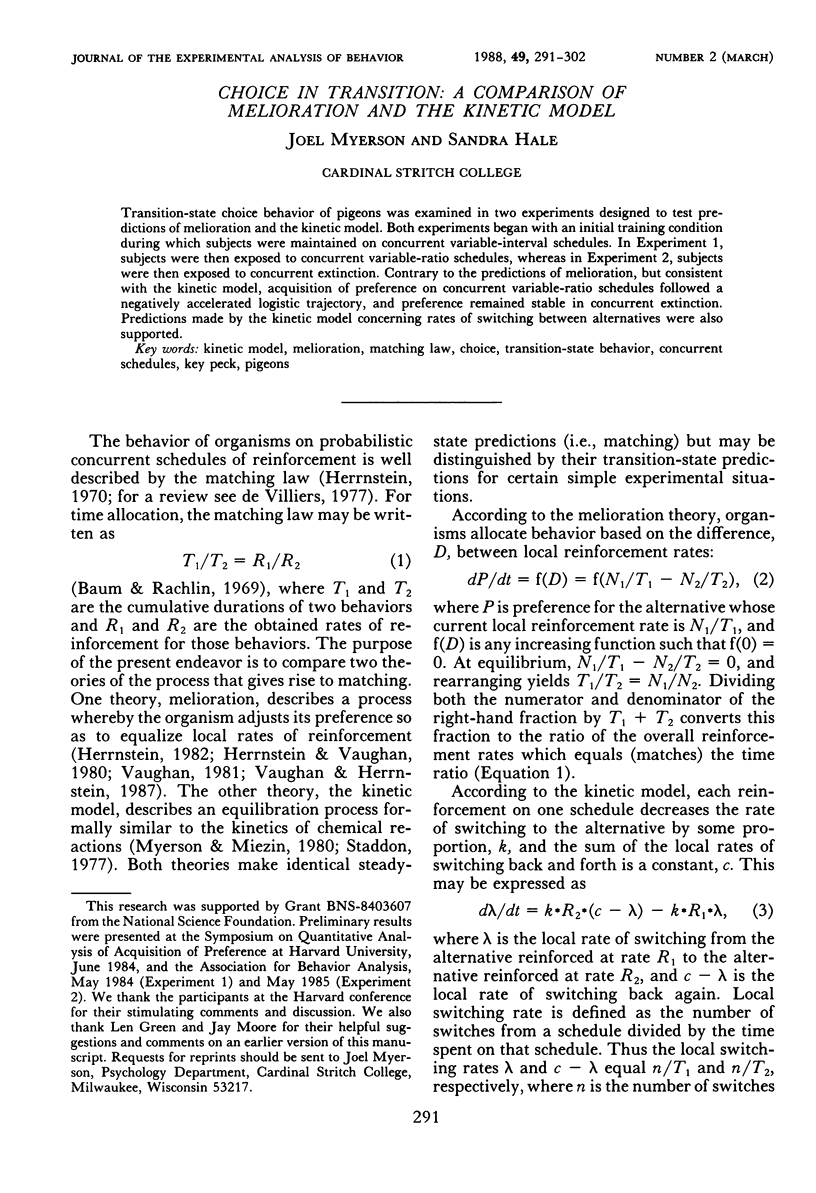

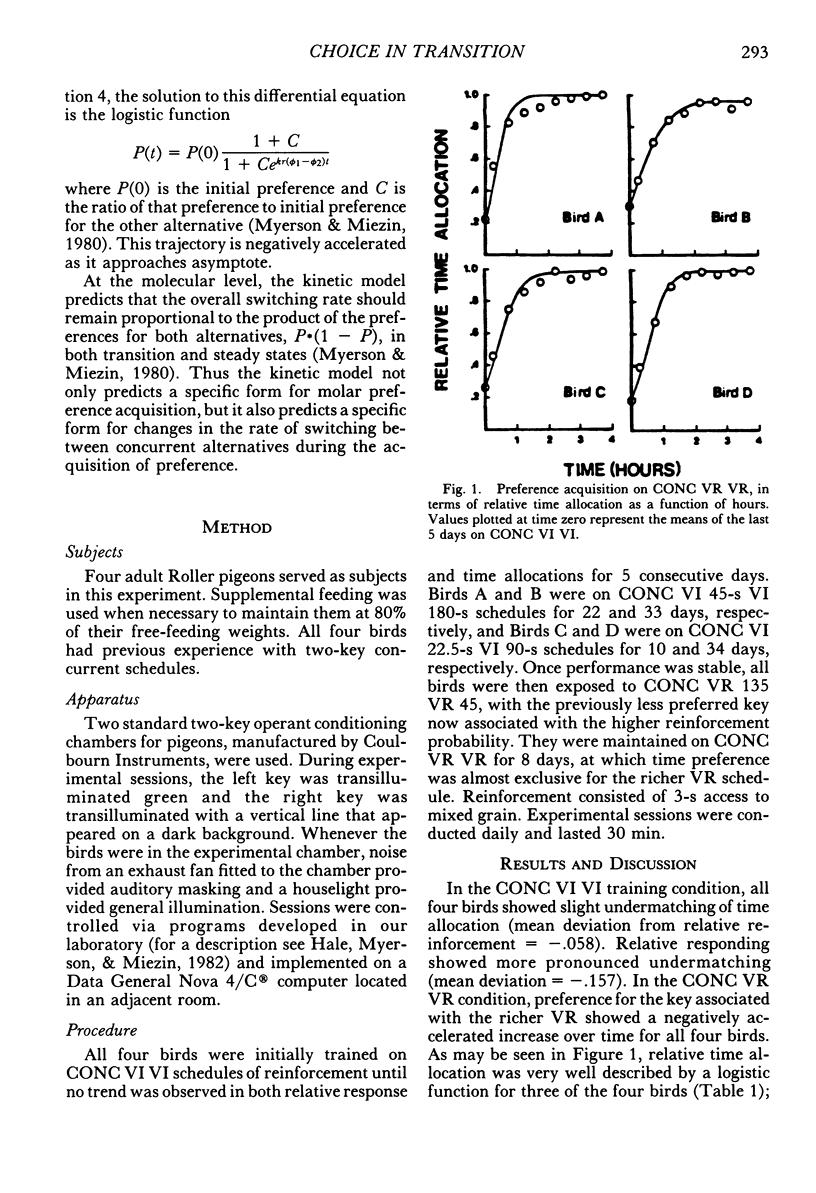
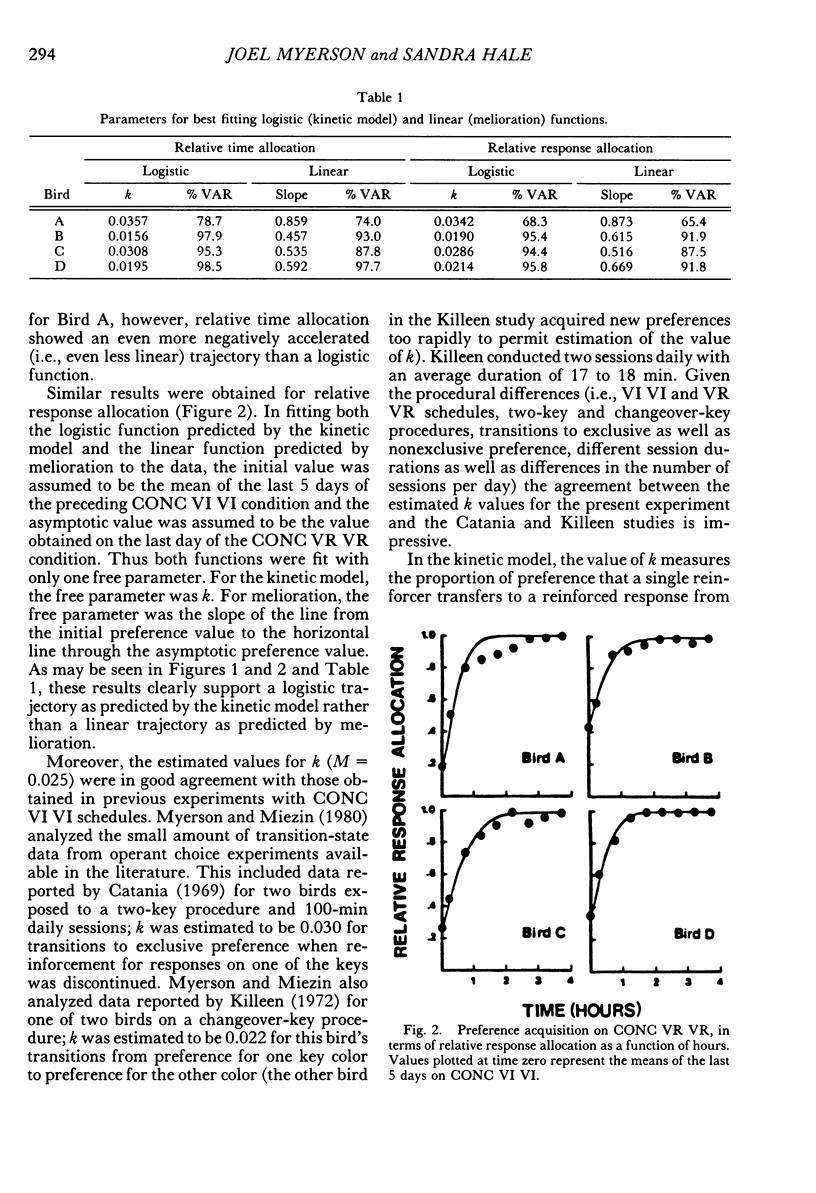
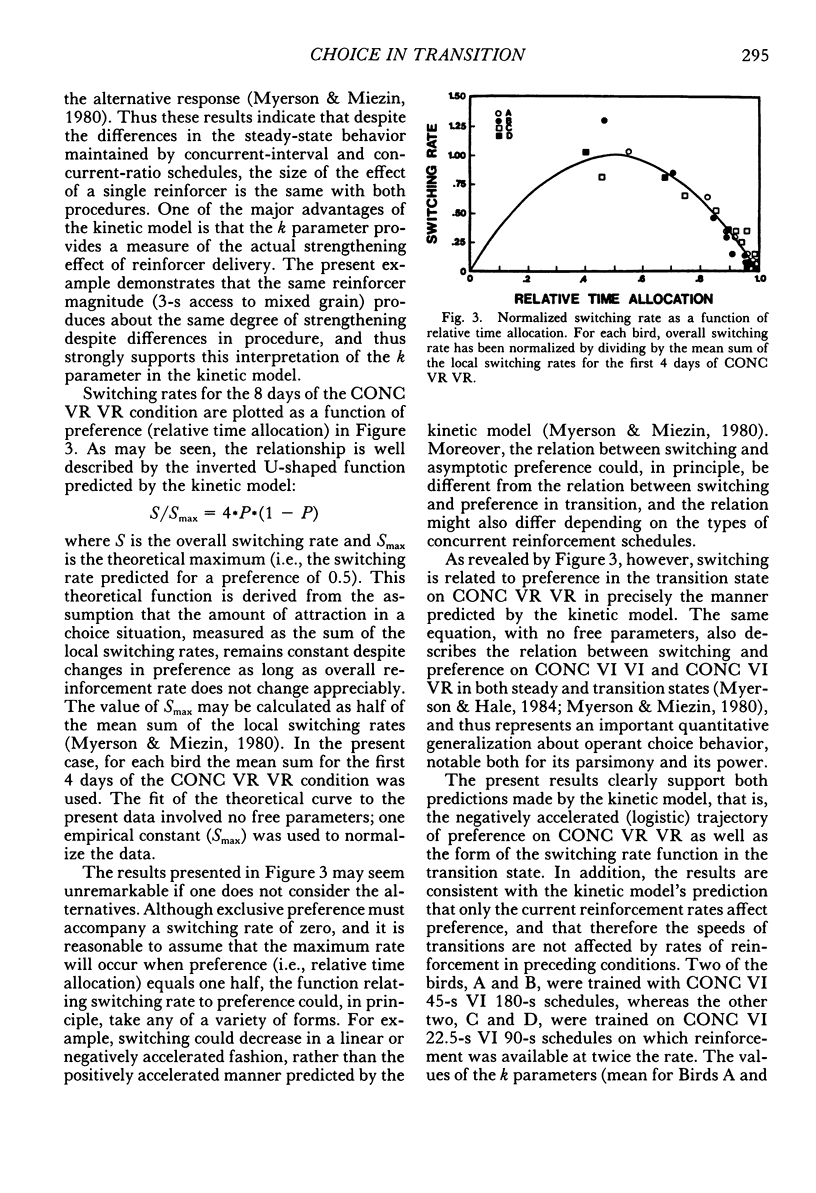
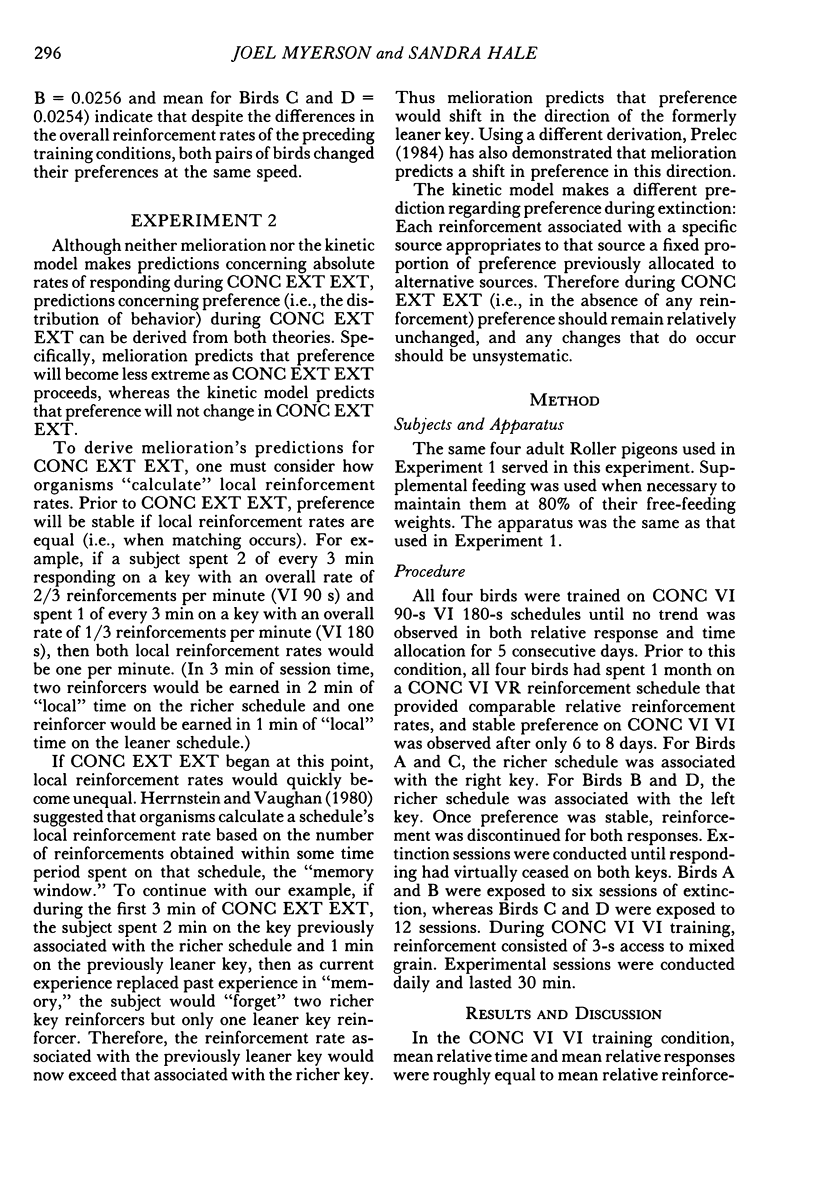
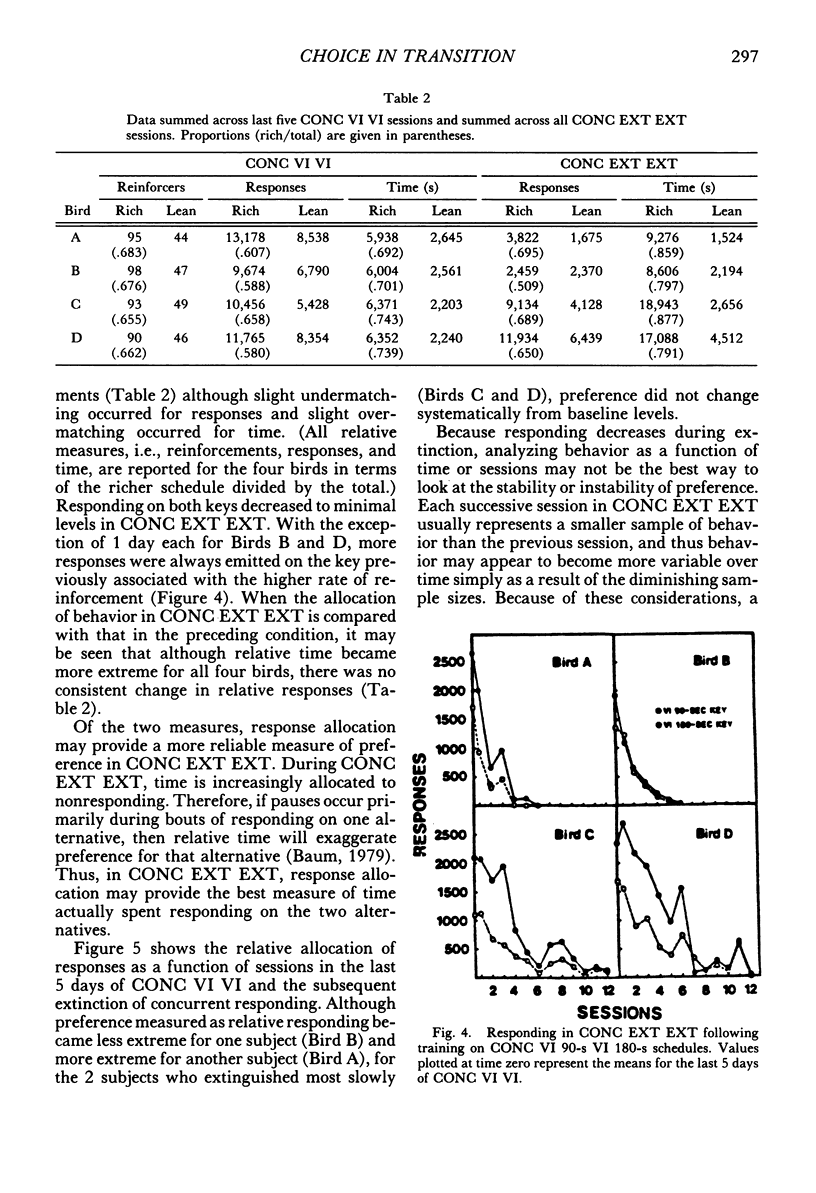
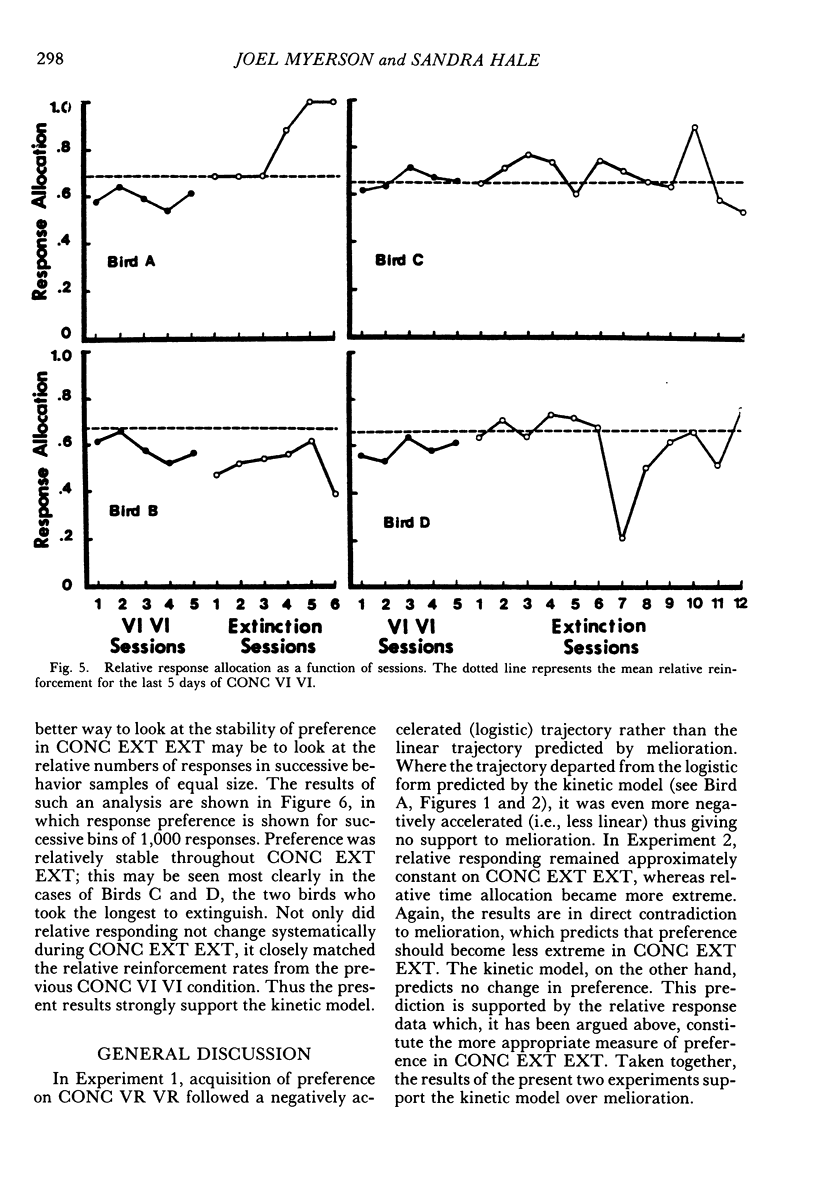
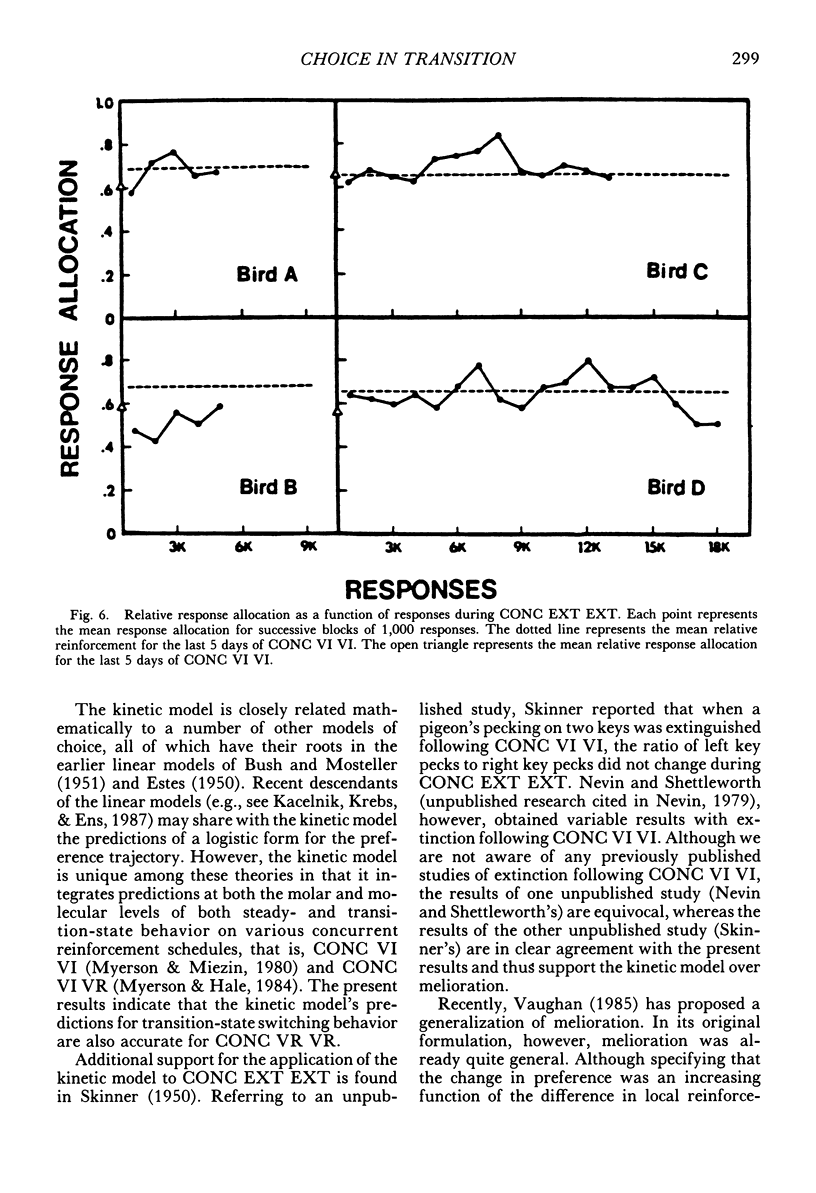
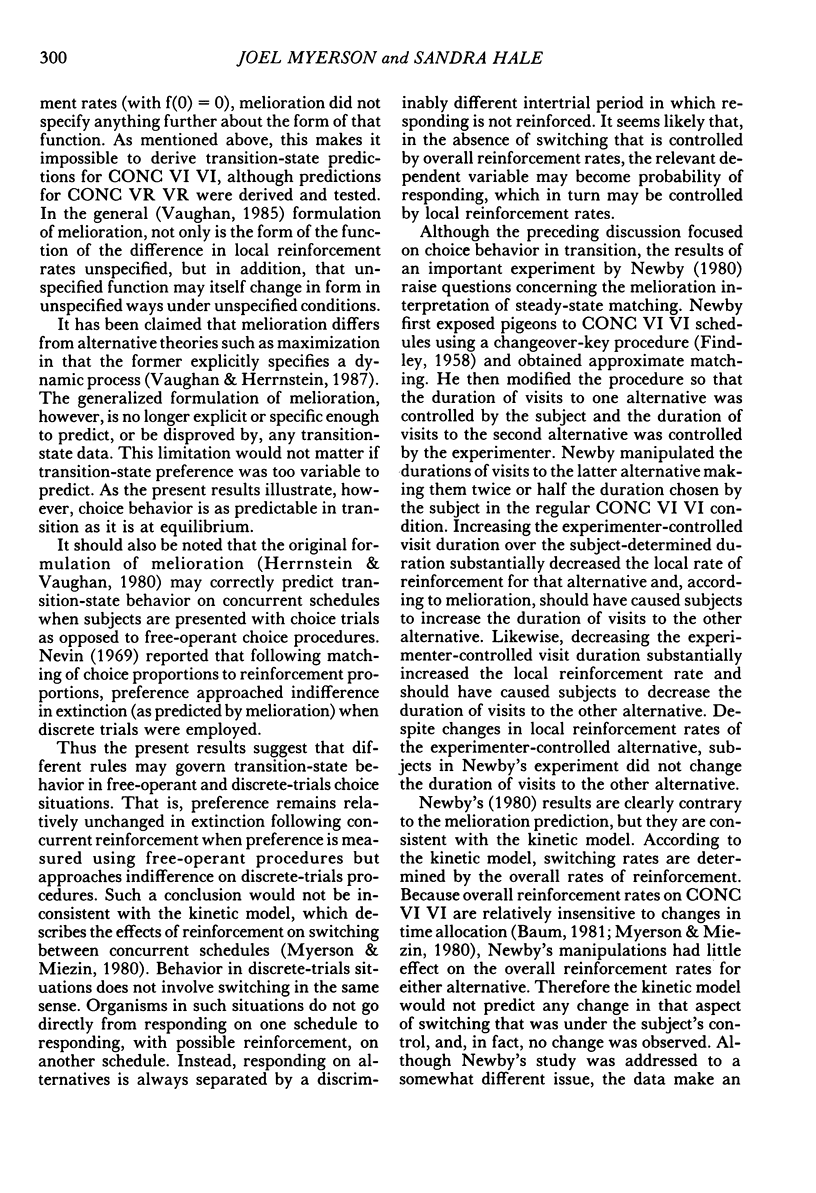

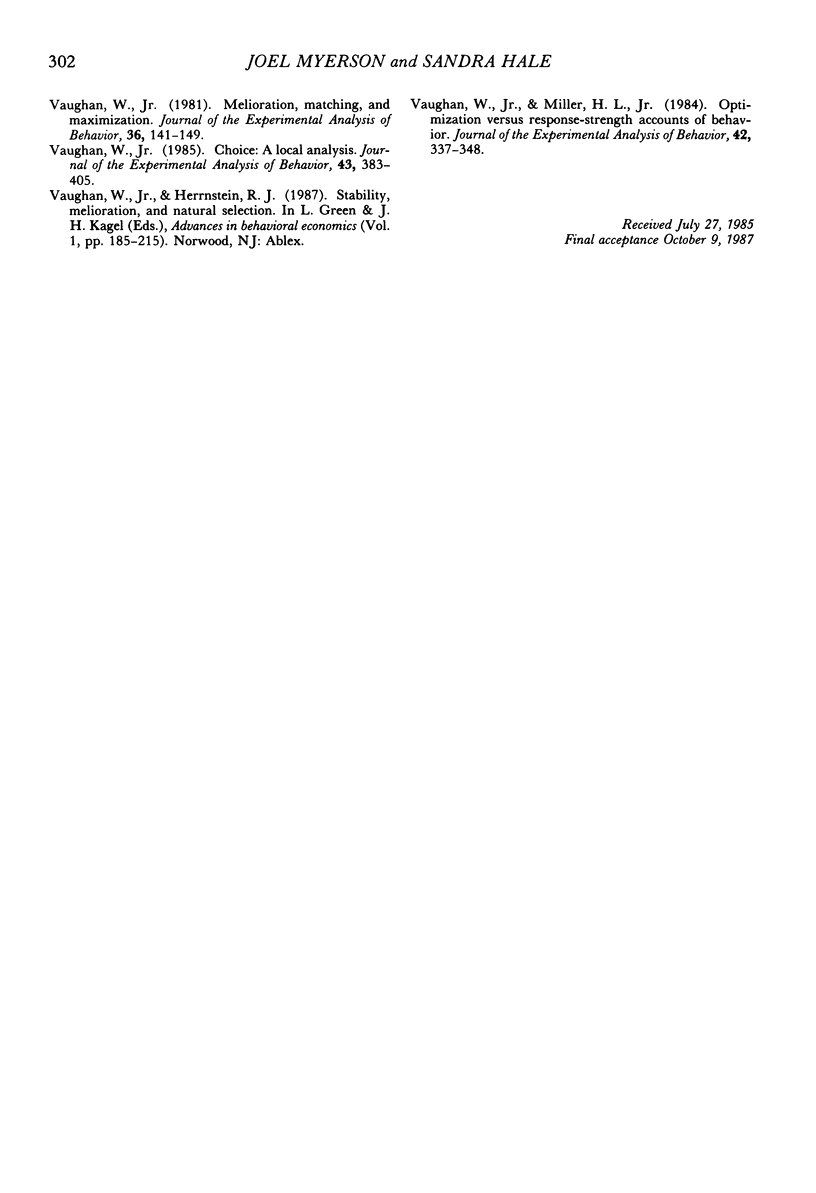
Selected References
These references are in PubMed. This may not be the complete list of references from this article.
- BUSH R. R., MOSTELLER F. A mathematical model for simple learning. Psychol Rev. 1951 Sep;58(5):313–323. doi: 10.1037/h0054388. [DOI] [PubMed] [Google Scholar]
- Baum W. M. Matching, undermatching, and overmatching in studies of choice. J Exp Anal Behav. 1979 Sep;32(2):269–281. doi: 10.1901/jeab.1979.32-269. [DOI] [PMC free article] [PubMed] [Google Scholar]
- Baum W. M. Optimization and the matching law as accounts of instrumental behavior. J Exp Anal Behav. 1981 Nov;36(3):387–403. doi: 10.1901/jeab.1981.36-387. [DOI] [PMC free article] [PubMed] [Google Scholar]
- Baum W. M., Rachlin H. C. Choice as time allocation. J Exp Anal Behav. 1969 Nov;12(6):861–874. doi: 10.1901/jeab.1969.12-861. [DOI] [PMC free article] [PubMed] [Google Scholar]
- Baum W. M. The correlation-based law of effect. J Exp Anal Behav. 1973 Jul;20(1):137–153. doi: 10.1901/jeab.1973.20-137. [DOI] [PMC free article] [PubMed] [Google Scholar]
- Boelens H. Melloration and maximization of reinforcement minus costs of behavior. J Exp Anal Behav. 1984 Jul;42(1):113–126. doi: 10.1901/jeab.1984.42-113. [DOI] [PMC free article] [PubMed] [Google Scholar]
- CATANIA A. C. Concurrent performances: reinforcement interaction and response independence. J Exp Anal Behav. 1963 Apr;6:253–263. doi: 10.1901/jeab.1963.6-253. [DOI] [PMC free article] [PubMed] [Google Scholar]
- Catania A. C. Concurrent performances: inhibition of one response by reinforcement of another. J Exp Anal Behav. 1969 Sep;12(5):731–744. doi: 10.1901/jeab.1969.12-731. [DOI] [PMC free article] [PubMed] [Google Scholar]
- Findley J. D. Preference and Switching under Concurrent Scheduling. J Exp Anal Behav. 1958 Apr;1(2):123–144. doi: 10.1901/jeab.1958.1-123. [DOI] [PMC free article] [PubMed] [Google Scholar]
- HERRNSTEIN R. J. Relative and absolute strength of response as a function of frequency of reinforcement. J Exp Anal Behav. 1961 Jul;4:267–272. doi: 10.1901/jeab.1961.4-267. [DOI] [PMC free article] [PubMed] [Google Scholar]
- Herrnstein R. J. On the law of effect. J Exp Anal Behav. 1970 Mar;13(2):243–266. doi: 10.1901/jeab.1970.13-243. [DOI] [PMC free article] [PubMed] [Google Scholar]
- Killeen P. A yoked-chamber comparison of concurrent and multiple schedules. J Exp Anal Behav. 1972 Jul;18(1):13–22. doi: 10.1901/jeab.1972.18-13. [DOI] [PMC free article] [PubMed] [Google Scholar]
- Mazur J. E. Optimization theory fails to predict performance of pigeons in a two-response situation. Science. 1981 Nov 13;214(4522):823–825. doi: 10.1126/science.7292017. [DOI] [PubMed] [Google Scholar]
- McSweeney F. K., Melville C. L., Buck M. A., Whipple J. E. Local rates of responding and reinforcement during concurrent schedules. J Exp Anal Behav. 1983 Jul;40(1):79–98. doi: 10.1901/jeab.1983.40-79. [DOI] [PMC free article] [PubMed] [Google Scholar]
- Nevin J. A. Interval reinforcement of choice behavior in discrete trials. J Exp Anal Behav. 1969 Nov;12(6):875–885. doi: 10.1901/jeab.1969.12-875. [DOI] [PMC free article] [PubMed] [Google Scholar]
- SKINNER B. F. Are theories of learning necessary? Psychol Rev. 1950 Jul;57(4):193–216. doi: 10.1037/h0054367. [DOI] [PubMed] [Google Scholar]
- Staddon J. E. On Herrnstein's equation and related forms. J Exp Anal Behav. 1977 Sep;28(2):163–170. doi: 10.1901/jeab.1977.28-163. [DOI] [PMC free article] [PubMed] [Google Scholar]
- Vaughan W. Choice: A local analysis. J Exp Anal Behav. 1985 May;43(3):383–405. doi: 10.1901/jeab.1985.43-383. [DOI] [PMC free article] [PubMed] [Google Scholar]
- Vaughan W., Jr, Miller H. L., Jr Optimization versus response-strength accounts of behavior. J Exp Anal Behav. 1984 Sep;42(2):337–348. doi: 10.1901/jeab.1984.42-337. [DOI] [PMC free article] [PubMed] [Google Scholar]
- Vaughan W. Melioration, matching, and maximization. J Exp Anal Behav. 1981 Sep;36(2):141–149. doi: 10.1901/jeab.1981.36-141. [DOI] [PMC free article] [PubMed] [Google Scholar]


